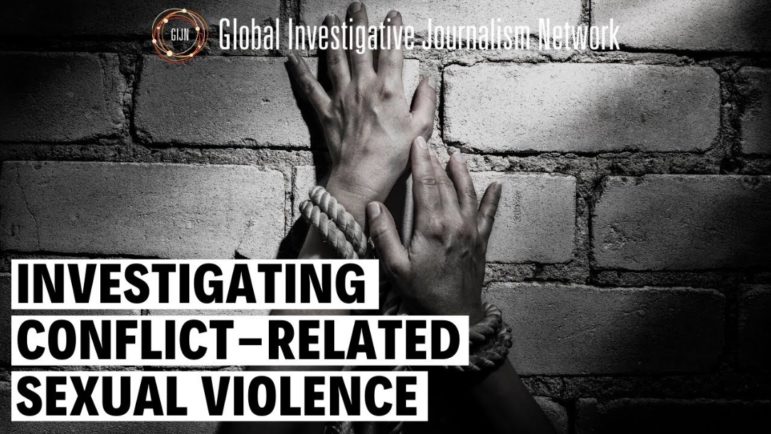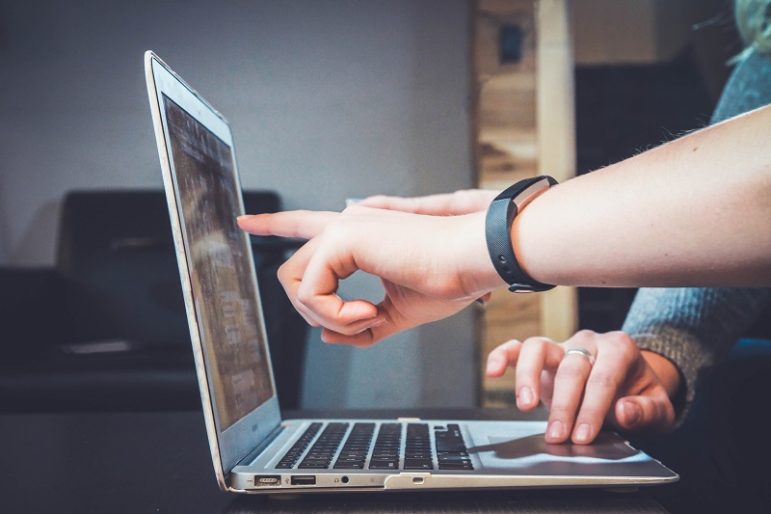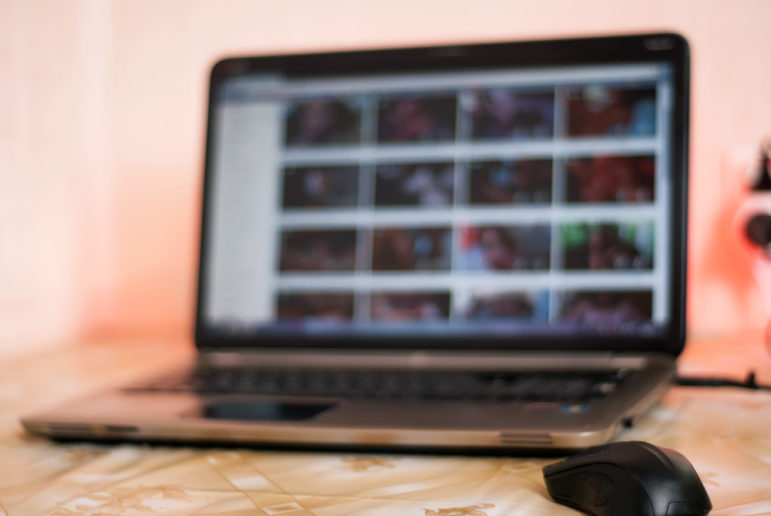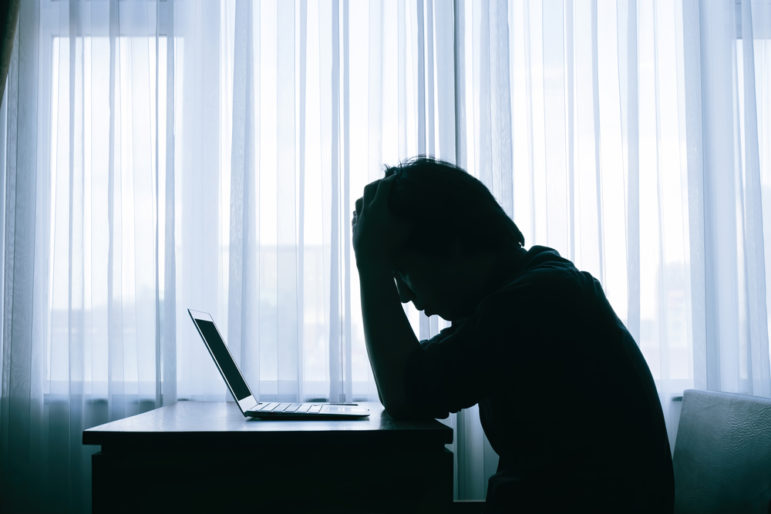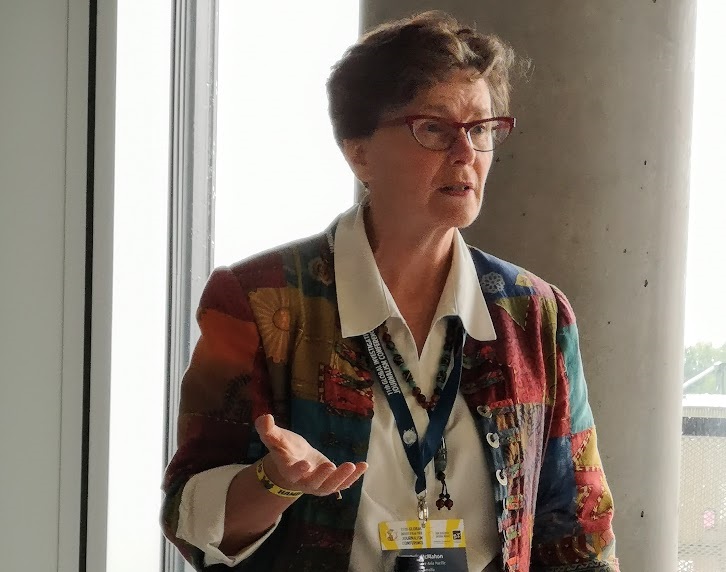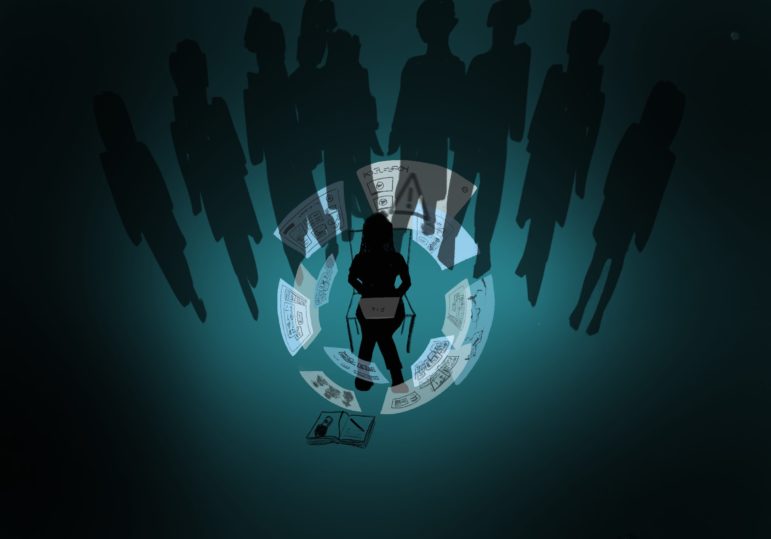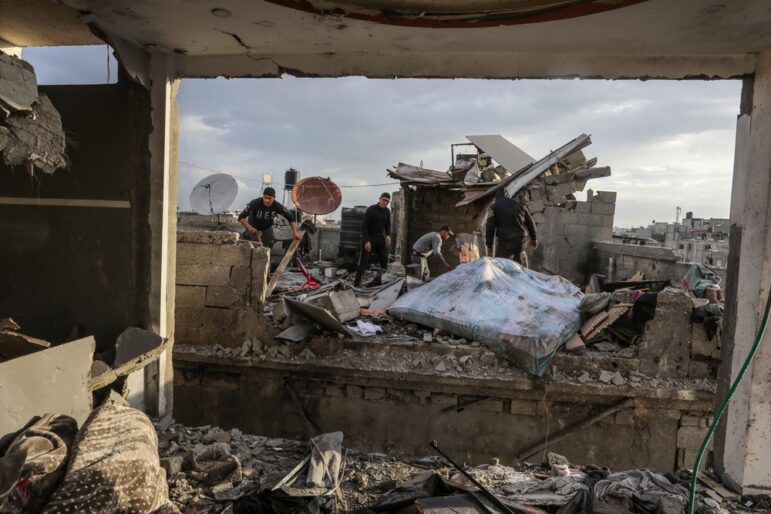

Palestinians inspect a house in the city of Rafah in the southern Gaza Strip after an Israeli air strike in January. Image: Shutterstock
How Journalists Can Practice Self-Care When Investigating Graphic Visuals from War and Conflict
Read this article in
Open source investigations, once a niche area dominated by specialized websites like Bellingcat have entered mainstream journalism, driven by the need to verify large quantities of images, videos, and claims in real time. Large outlets like the BBC and The New York Times now have dedicated teams for visual investigations whose work has become increasingly important in the context of information war.
This work is particularly valuable in a conflict like the one in Gaza, where access to journalists on the ground is very limited and user-generated content can provide journalists with details of what’s happening on the ground. However, in doing so open source experts are faced with torrents of graphic visuals depicting human suffering and death.
How can journalists protect themselves against any harm from incessantly viewing traumatic imagery? How can they build resilience in the face of intense conflicts like the one between Israel and Gaza, which shows no sign of slowing after a month of fighting?
We posed these questions to Andrea Lampros and Alexa Koenig, co-authors of “Graphic: Trauma and Meaning in our Online Lives,” a recently published book that aims to help people protect themselves against second-hand trauma.
Lampros and Koenig co-founded UC Berkeley Human Rights Center’s Investigations Lab in 2016, which collaborates with Amnesty International’s Digital Verification Corps to conduct open source investigations of possible human rights violations. In 2021, Lampros left the Human Rights Center (HRC) to take up the post of communications director for Berkeley School of Education. Koenig is now co-faculty director of HRC and director of its investigations program.
Q. How did your experiences inform your book and how did you write it?
Lampros: The book is born from our experience with the HRC Investigations Lab. The intent was to train students in how to verify documents, using all of the open source information that is coming at us so ferociously from around the world, and make sense of it so that it can be more usable for investigators, journalists, and lawyers to document facts.
It was crucial from Amnesty International’s side from the very beginning, as well as for some of our other advisors at the HRC to consider how we were going to keep students safe psychosocially, psychologically, emotionally while looking at all of these terrible images, specifically, at that time, from Syria.
This was built in from the beginning. We were talking about cybersecurity, physical security, and psychosocial security. All three of those worked in concert with each other.
What we taught students from the get-go is to be aware of how you’re taking in this information, to know what feels normal to you, and what your baseline is. How do you normally feel? How are you normally joyful? What are the things you do to take care of your mental and physical health?
Then we took students through the particular risks of using digital content: first of all, it’s everywhere all the time, you can’t escape it, it’s very intimate, it’s raw. And it’s information coming to you from users, bystanders, survivors, people up close. You don’t know what’s going to happen, there’s a whole element of surprise when you’re looking at user-generated content.
Over time, students informed what we were talking about, because they had other ideas. We were saying a warning sign for secondary trauma might be not sleeping because you’re having nightmares, but one student said to us, “I didn’t realise, because you had talked about not sleeping, that I was sleeping too much, I was starting to go to bed early and sleeping way more than I usually sleep.” And so we tried different things over time. And then Alexa and I realised this had a broader application to the general public, and, of course, to journalists.
Q. What do you mean by psychosocial security?
Koenig: In 2016, when we started the investigations lab, the framing of psychological well-being was around resiliency and wellness. But when I started doing professional trainings for war crimes investigators, one of the things that we would do is lay out all the modules we can train investigators on, ranging from online search to verification of digital materials, to digital security.
They would inevitably say, “We want all these modules, the only one we don’t need is resiliency, we’re hard-working investigators, we’re hardened journalists.” But it was becoming so apparent that they weren’t fine and that a lot of people were using numbing skills to cope, like drinking and drugs, that I thought, we’ve got to find another way to frame this.
That’s why we took a holistic security framework, which is where you think about the digital security of what you do, the physical security of everyone who’s possibly involved, and then the psychosocial security of everyone: whether they’re the people doing the investigation, the people being investigated or the individuals who were the victims of violence.
We are examining in what ways this could negatively impact them, and how we can minimize that risk of harm. And then the social part of psychosocial security is really about the wellness of the community of practice. So, if it’s an investigations team, then the well-being of that team, the well-being of the communities that have been impacted by violence, etc. We’ve been learning from bringing this conversation around wellness into a conversation around security so that it was ultimately more palatable.
When people’s sense of digital security starts slipping, their psychological well-being inevitably goes down, and the potential for physical harm goes up. The same thing happens when your physical risks go up: your psychological well-being goes down.
You can just go around the circle between these three factors, and realize that they are intimately interwoven. It’s important to address them as discrete phenomena, but also to recognize that you need all three if you want to maximize your overall security.
Q. What are journalists risking with this kind of work, in terms of the possible impact on their mental health?
Lampros: Burnout and secondary trauma can happen to you. And that’s not just being affected in the moment, because as we all know intuitively, all of us are affected in the moment. That’s normal, that’s healthy, that’s human. But secondary trauma is about a more long-standing shift in your worldview, in your normal activity, that is dangerous and debilitating, and it makes it so that you can’t continue the work.
I was watching a panel at the Global Investigative Journalism Network a few years ago where incredible journalists, all women, were talking about burnout, some about secondary trauma. But a lot of times they were talking about how they kept pushing it away, they kept thinking, ‘This is just a hazard of the job, I need to be tougher,’ etc. Until it just overtook them, and then they had to take a lot of time off. That’s what we know can happen that can affect you in ways that you can’t continue. How do we do this so that is doable for the long haul?
I don’t think that there’s any one answer to that. I think a starting place is to recognize that we need a different paradigm to the ‘tough it out, if it’s hard just have some drinks and get through it’ attitude. And I think this is pertinent to journalists, the thought that you’re not the one in harm’s way and that you should be able to handle it.
That’s what many in journalism have been working against for a while, but I think it’s just especially acute right now with the flood of videos and imagery from conflict zones around the world, particularly Israel and Gaza. All of this is part of a really hard shift in mindset that we have to make. To keep integrity, if we are people who value human rights and human dignity, then we have to think of that for everybody involved, including journalists, human rights workers, lawyers, and investigators.
In the book, we also interviewed content moderators. Some of what they told us is that the hardest part is the lack of agency: you have to look at a certain amount of content, you can’t step away, and you also don’t know the outcome. And certainly, journalists are in a similar position.
A way to protect yourself is through finding ways to set some parameters, and this is what we’ve heard from journalists who are covering Gaza and Israel right now. Of course, you have to do it, but you can also set a time limit and then step away and take a break, go for a walk.
Q. What are some other ways journalists and other open source investigators can protect themselves while doing this work?
Lampros: People are different in this. A journalist doing open source investigations, although in this case not on Gaza and Israel, recently told me that she needs to take a break and cry, and just let it out at that moment. She also said that she sometimes makes an altar according to her Mexican tradition, dedicated to the survivors or the victims, as a way of grieving.
There are different ways that you can recognize that you need to grieve. Sometimes it can’t be in real-time, but it must happen sometime later, because otherwise, it’s going to come out differently.
Q. In the case of the current conflict in Israel and Gaza, how can journalists maintain these practices for a prolonged period?
Lampros: I think it feels like you can’t step away, but it’s about taking a break anyway. Because we have no idea how long this is going to last, we have to trust our colleagues and our team. This is where structural things come into play: you have got to rely on each other.
The other important factor is community, especially in moments like these, and especially for people who are doing this work. They need colleagues in the community who know how hard it is, that they can call and understand one another. It’s hard to do that with your family, or friends who aren’t in that line of work. Finding that community to be able to let out the emotion is very important, and to validate the inhumanity of it.
And then I’d say, the third thing is knowing your ability, not one of us can change the course of this war. So, we have to know that whatever piece we are doing is enough, and just have to keep replaying that and know that taking care of ourselves is not selfish, it is actually selfless, because it allows us to stay in this work.
Q. What are some other warning signs of secondary trauma journalists should look out for?
Koenig: One that’s very common is a shortened temper. For example, if you find yourself snapping at your partner, children, or colleagues or you see someone else snapping in ways that seem out of character, it can often be a sign, particularly if they’ve been drowning in online information, that it is starting to affect them and creep into their everyday functioning.
Alcohol use going up is also one thing that I know a lot of people working in the space have started to monitor, but also something that everyday people who are engaged with social media can easily begin to track. Nightmares may be another piece, where you almost feel like you can’t escape the content because it’s not only there all the time in your waking life, on every platform that you’re going onto, but it’s even haunting you in your dreams.
So much of what we recommend is about trying to keep this horrific content away from your bed and late-night hours, just knowing how memory works and how the last thing you may watch or read before you go to bed is more likely to deeply imprint.
For so many people around the world, it’s become a habit to try to unplug at the end of the day by looking at your phone and scrolling through Instagram, or Facebook, and seeing what your friends are up to. Today, though, of course, that’s so interspersed for many people with the horrific things that are happening around the world.
Q. What advice would you give a smaller newsroom or a smaller team who wants to start carrying out open source investigations?
Koenig: Starting small and starting slowly, having one or two people who’ve been well trained in this come onto the team and help the more traditional reporters understand where open source investigations can be useful, but also where they can be dangerous.
In the context of Israel and Palestine most recently, we saw a lot of major media outlets, and also some very well-known open source investigations teams, come up with very different conclusions based on their analyses of the same videos and the same open source content. This really shows the risk of ever relying on visual information without getting corroborating data from sources on the ground, and also physical evidence.
In the war crime space, you always want physical evidence, testimonial evidence, which would be sources in journalism, and then documentary evidence, which would be videos and photographs, emails, texts… The gold standard, at least in war crimes investigations, is to triangulate all three, and it’s very important for journalism too. It can be so irresponsible to create something flashy and convincing that has less grounding in the facts of what took place.
This article was originally published by the Reuters Institute for the Study of Journalism and is republished with permission.
 Marina Adami works as a digital journalist at the Reuters Institute. Originally from Italy, she has reported on breaking news for Politico Europe in Brussels and on local news in London.
Marina Adami works as a digital journalist at the Reuters Institute. Originally from Italy, she has reported on breaking news for Politico Europe in Brussels and on local news in London.



